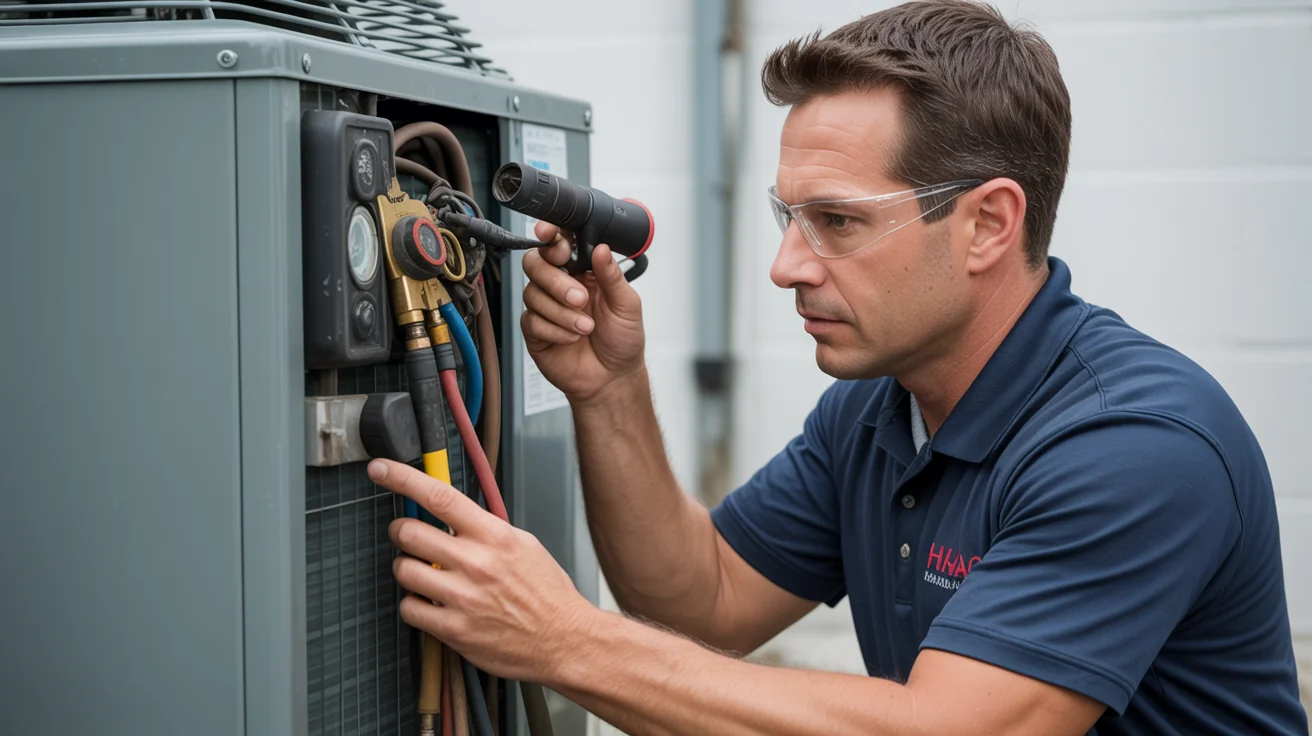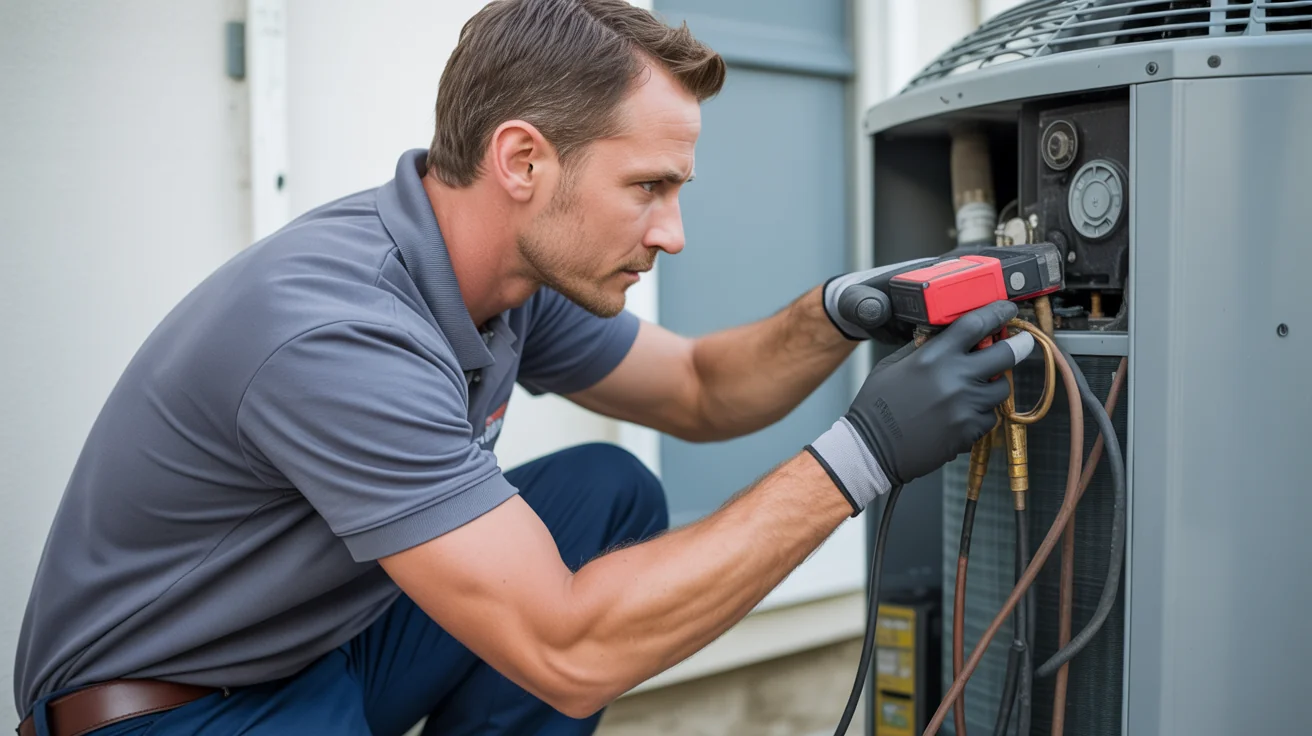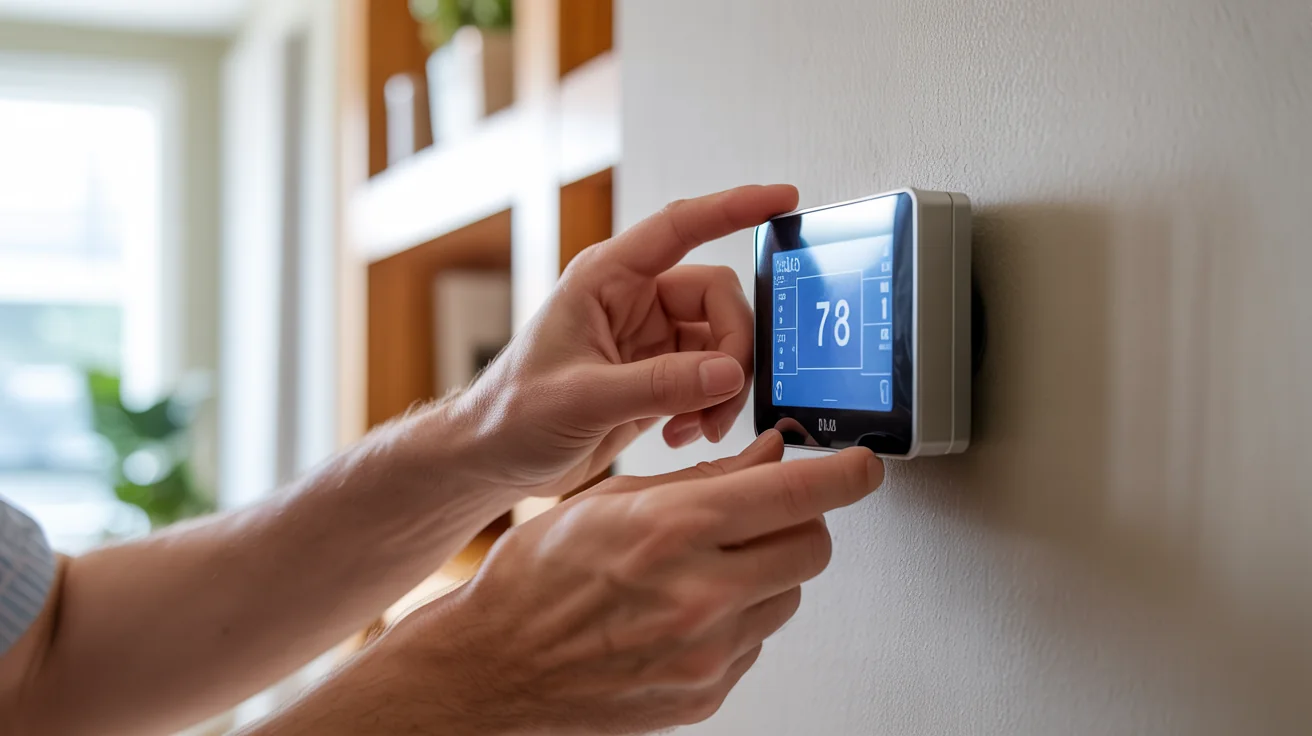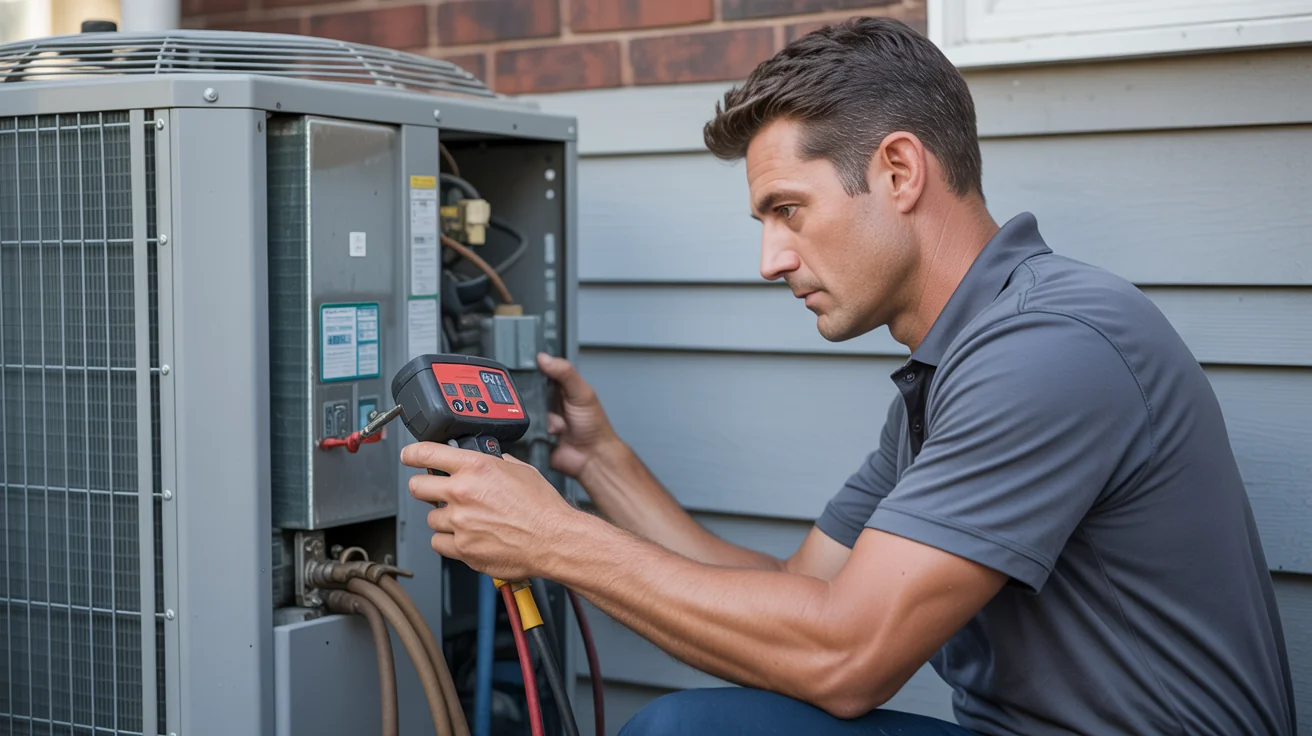HVAC Filter Selection Guide All Types (2025): Complete North Texas Air Quality & Efficiency Guide
Comprehensive HVAC filter selection guide for North Texas climate. Filter types, MERV ratings, efficiency comparison, and optimal choices for air quality and system protection.

The Complete HVAC Filter Selection Guide for North Texas Homes
I’ll never forget this service call in Plano where a customer installed hospital-grade HEPA filters all through their house, convinced they were being super smart. Six months later their blower motor died - a brutal $2,400 repair. Those filters were so restrictive they literally strangled the system to death.
On the flip side, I’ve watched customers use those pathetic $2 fiberglass filters for years, scratching their heads about dirty coils and skyrocketing energy bills. One family got hammered with $3,800 in coil cleaning and repairs because their cheap filters let everything blast right through.
The secret isn’t buying the most expensive filter or the cheapest junk - it’s finding that sweet spot for YOUR specific system in our absolutely insane North Texas environment.
Why Our Area Needs Special Attention
Living here for over a decade has shown me exactly why North Texas absolutely destroys filters. We get attacked from every possible direction.
Spring unleashes pollen counts that’ll make your eyes water just from looking outside. I’ve measured over 1,500 grains per cubic meter during peak oak season - enough to kill a basic filter in days.
Summer dust storms barrel in from West Texas with particles so fine they ghost right through cheap filters. Throw in constant construction around Frisco and Plano, plus our humidity that breeds mold like crazy, and your air filtration system is under constant assault.
Here’s what 15 years in this business taught me: the “best” filter for North Texas isn’t the highest MERV rating you can find. It’s the one that cleans your air without murdering your system.
Making Sense of All Those Numbers
MERV Ratings (The System That Actually Matters)
MERV stands for Minimum Efficiency Reporting Value, and it’s the industry standard for measuring how good your filter is at catching stuff. The scale runs 1-16, with higher numbers catching smaller particles.
Here’s how I break it down for customers: MERV 1-4 filters are basically useless for anything but protecting your equipment from chunks of debris. MERV 5-8 represents your standard home filters - decent at catching dust and some pollen. MERV 9-12 is where things get interesting - great for allergies and pet owners. MERV 13-16 provides hospital-grade filtration that catches almost everything (but needs the right system).
Particle Size Capture Rates:
| MERV Rating | 3.0-10.0 μm | 1.0-3.0 μm | 0.3-1.0 μm | Best Applications |
|---|---|---|---|---|
| MERV 6-8 | 50-85% | <50% | <20% | Standard homes, basic allergies |
| MERV 9-12 | >85% | 50-85% | <75% | Severe allergies, pets |
| MERV 13-16 | >90% | >85% | 75-95% | Medical needs, extreme sensitivity |
Alternative Rating Systems
MPR (Microparticle Performance Rating): MPR 300-600 compares to MERV 6-8. MPR 1000-1200 compares to MERV 9-11. MPR 1500-2800 compares to MERV 12-13.
FPR (Filter Performance Rating): FPR 4-5 provides basic protection (MERV 6-8). FPR 7-8 offers better protection (MERV 9-11). FPR 9-10 delivers best protection (MERV 12-13).
What’s Actually Available (And What Works)
Fiberglass Panel Filters (The $2 Wonders)
These are those basic filters you see everywhere for $1-3. They’re basically spun glass in a cardboard frame, and honestly, they’re pretty much worthless for our North Texas air.
Sure, they barely restrict airflow, which is great for your system. But they also barely catch anything. I’ve pulled filters after a month that looked brand new because all the dust and pollen just blew right through.
The only time I recommend these is if your system is so old and weak that anything else might choke it. Even then, you’re basically just protecting your equipment from big chunks of debris - forget about allergies or air quality.
Pleated Cotton/Polyester Filters (The Workhorses)
Now we’re talking. These are what I recommend for most North Texas homes. You’re looking at $5-12 each, and they’ll typically last 2-3 months depending on how dirty your air gets.
The pleated design gives you way more surface area than those flat fiberglass filters, so they actually catch dust, pollen, and bigger pet dander particles. They’ll grab about 80-85% of the particles bigger than 3 microns - that includes most of the stuff that makes you sneeze.
These are perfect for homes without major allergy issues. They provide good, balanced filtration without choking your system. Most newer homes can handle these no problem, and even some older systems do fine with them.
High-Efficiency Pleated Filters
MERV 9-12 Performance: Particle capture performance provides excellent allergen and fine particle removal for superior indoor air quality. Cost ranges from $15-25 each with premium pricing reflecting advanced filtration capabilities. Lifespan typically extends 90 days but varies with contamination levels and environmental conditions. Airflow experiences moderate restriction that may require system evaluation to ensure compatibility with your equipment.
Advanced Filtration Benefits: Allergen control achieves 85-95% removal of pollen, dust mites, and pet dander for significant relief. Mold spore capture provides good removal of larger mold spores that affect indoor air quality. Smoke particle filtering offers moderate effectiveness against tobacco smoke and similar contaminants. Fine dust protection delivers excellent defense against Texas dust storms and construction particles.
Best Candidates: Allergy sufferers experience significant improvement in indoor air quality with reduced symptoms and better comfort. Pet owners benefit from superior pet dander and odor control that makes homes more comfortable. Those with respiratory issues see asthma and COPD symptom reduction through cleaner air delivery. Homeowners with air quality priorities achieve maximum filtration performance with standard HVAC systems.
Electronic and Electrostatic Filters
Passive Electrostatic (Washable): MERV equivalent ratings range from 4-8 depending on filter design and construction quality. Cost involves $50-100 initial investment with $0 ongoing expenses since filters are washable and reusable. Lifespan extends 5-10 years with proper maintenance and careful handling during cleaning. Maintenance requires monthly washing to maintain filtration performance and prevent particle buildup.
Electronic Air Cleaners: Efficiency achieves 85-95% particle removal when properly maintained with regular cleaning schedules. Cost ranges from $800-2,500 installed depending on system capacity and installation complexity. Operating cost involves minimal electricity usage with low ongoing energy consumption. Maintenance requires monthly cell cleaning as essential for continued performance and efficiency.
Pros and Cons: Advantages: long-term cost savings, washable/reusable. Disadvantages: requires diligent maintenance, ozone production concerns. Performance variability: effectiveness decreases without regular cleaning.
HEPA and Near-HEPA Filters
True HEPA (MERV 17-20): Efficiency: 99.97% removal of 0.3 μm particles. Applications: medical facilities, clean rooms. HVAC compatibility: requires system modification for residential use. Cost: $50-150 per filter plus system modifications.
Near-HEPA (MERV 13-16): Efficiency: 75-95% removal of 0.3 μm particles. Residential compatibility: may work with high-capacity systems. Cost: $25-60 per filter. Performance: hospital-grade air quality.
System Requirements: Blower capacity: must overcome 0.5-1.5” pressure drop. Ductwork: may require modifications for proper airflow. Professional evaluation: system assessment required before installation.
North Texas-Specific Filter Recommendations
Seasonal Filter Selection Strategy
Spring (March-May) - High Pollen Season: Recommended: merv 9-11 pleated filters. Change frequency: every 30-45 days during peak pollen. Rationale: balance pollen capture with system protection. Cost: $60-100 for season-long protection.
Summer (June-August) - Dust and Humidity: Recommended: merv 8-10 with antimicrobial treatment. Change frequency: every 60 days in clean environments. Special consideration: mold resistance important. Performance focus: consistent airflow for cooling efficiency.
Fall (September-November) - Moderate Conditions: Recommended: merv 7-9 standard pleated. Change frequency: every 90 days standard schedule. Rationale: cost-effective maintenance during mild weather. Preparation: transition to heating season filtration.
Winter (December-February) - Indoor Air Quality Focus: Recommended: merv 9-11 for closed-home conditions. Change frequency: every 75-90 days. Consideration: dry air increases static electricity and dust. Health focus: maximum filtration during confined indoor time.
Home-Specific Recommendations
Standard Homes (No Special Needs): Primary choice: merv 8 pleated filters. Cost: $8-12 per filter. Performance: 85% dust removal, basic allergen control. Change schedule: every 60-90 days.
Allergy-Sensitive Households: Primary choice: merv 10-11 pleated filters. Cost: $15-20 per filter. Performance: 90%+ allergen removal. Change schedule: every 45-60 days. Additional: consider air purifier supplementation.
Pet Owners: Primary choice: merv 9-10 with odor control. Cost: $12-18 per filter. Performance: superior dander capture, odor reduction. Change schedule: every 30-45 days (high dander load). Special feature: activated carbon for odor control.
Respiratory Issues (Asthma, COPD): Primary choice: merv 11-12 hospital-grade. Cost: $20-30 per filter. Performance: maximum particle removal for health protection. Change schedule: every 30-45 days strict. Professional consultation: system evaluation for compatibility.
Filter Installation and Maintenance
Proper Installation Procedures
Installation Steps:
- System shutdown: Turn off HVAC system at thermostat
- Access location: Remove filter access panel or grille
- Remove old filter: Note airflow direction arrow
- Inspect filter cavity: Check for damage or bypass gaps
- Install new filter: Ensure airflow arrow points toward blower
- Secure access panel: Restore all covers and panels
- System restart: Turn system back on and check operation
Common Installation Mistakes: Wrong direction: installing filter backward reduces efficiency 50%+. Size mismatch: gaps allow bypass, reducing filtration effectiveness. Missing gaskets: air bypass around filter edges. Forced installation: damaged filters don’t seal properly.
Filter Change Scheduling
Visual Inspection Guidelines: Light test: hold filter up to light – if no light passes, replace. Surface loading: heavy dust coating indicates replacement needed. System performance: reduced airflow suggests clogged filter. Allergy symptoms: increased symptoms may indicate filter failure.
Automatic Scheduling Options: Calendar reminders: set recurring reminders for changes. Smart thermostats: filter change notifications. Filter delivery services: automatic filter shipments. Professional monitoring: maintenance agreement filter management.
Advanced Filtration Integration
Whole-House Air Purifiers
Media Cabinet Systems: Filter thickness: 4-5 inch filters for extended capacity. MERV capability: can handle merv 13-16 without airflow restriction. Cost: $800-1,500 installed plus filter costs. Performance: hospital-grade filtration with normal system operation.
Electronic Air Cleaners: Technology: electrostatic precipitation for fine particle removal. Efficiency: 85-95% particle removal when maintained. Operating cost: $50-100 annually in electricity. Maintenance: monthly cleaning essential for performance.
UV Light Systems: Application: biological contamination control (mold, bacteria, viruses). Installation: in ductwork or at coil locations. Cost: $400-800 installed. Effectiveness: excellent for biological contaminants, no particle removal.
Filter System Combinations
Layered Filtration Approach: Pre-filter: merv 6-8 for large particle removal. Primary filter: merv 10-12 for fine particle capture. Specialty filter: activated carbon for odor/chemical removal. UV treatment: biological contamination control.
Cost-Effective Combinations: Standard + Portable: merv 8 whole-house + room air purifiers. Seasonal adjustment: higher merv during peak seasons. Targeted solutions: bedroom air purifiers for sleep quality. Professional integration: coordinate with hvac maintenance.
Cost Analysis and ROI
Filter Cost Comparison (Annual)
| Filter Type | Cost Per Filter | Changes Per Year | Annual Cost | 10-Year Cost |
|---|---|---|---|---|
| Fiberglass (MERV 1-4) | $2 | 12 | $24 | $240 |
| Basic pleated (MERV 6-8) | $8 | 6 | $48 | $480 |
| Premium pleated (MERV 9-12) | $18 | 6 | $108 | $1,080 |
| Near-HEPA (MERV 13-16) | $35 | 6 | $210 | $2,100 |
Health and System Protection Value
Health Benefits: Allergy reduction: 40-70% symptom improvement with proper filtration. Respiratory protection: reduced asthma triggers and irritants. Sleep quality: cleaner air improves rest and recovery. Medical cost savings: $500-2,000 annually in reduced medications/treatments.
System Protection Benefits: Coil cleanliness: clean coils maintain 95%+ efficiency vs. 60-70% dirty. Equipment longevity: 3-5 additional years of system life. Energy savings: 15-25% efficiency improvement with proper filtration. Repair avoidance: $1,500-3,000 in prevented coil and blower repairs.
Professional Filter Consultation
When to Seek Expert Advice
System Evaluation Needed: Airflow concerns: reduced comfort or performance with higher merv filters. Filter fit issues: gaps, bypass, or installation challenges. Health needs: medical conditions requiring maximum filtration. Cost optimization: balancing filtration needs with budget constraints.
Professional Services: System assessment: determine optimal filter type for your specific system. Airflow testing: verify adequate airflow with selected filters. Health consultation: match filtration needs to medical needs. Maintenance planning: integrate filter changes with professional service.
Jupitair’s Filter Services
Filter Consultation: System evaluation: professional assessment of filtration needs. Filter recommendation: optimal balance of health and system protection. Installation verification: proper installation and fit confirmation. Maintenance coordination: integration with service schedules.
Maintenance Program Benefits: Filter delivery: automatic delivery of correct filters. Installation service: professional filter changes during maintenance visits. Performance monitoring: track filter performance and system health. Health optimization: seasonal adjustments for maximum benefit.
Emergency Filter Situations
Filter Emergency Scenarios
System Shutdown Situations: No filter: never run system without filter - causes immediate damage. Wrong size: bypass around filter causes rapid coil contamination. Severely clogged: restricted airflow can damage blower motor. Damaged filter: broken filters allow contamination and restrict airflow.
Temporary Solutions: Emergency filters: keep spare filters for immediate replacement. Temporary operation: absolute maximum 24 hours without proper filter. Professional help: call for emergency filter service if needed. System protection: turn off system rather than run without proper filtration.
Your Filter Selection Action Plan
Assessment and Selection
- System evaluation: Determine current filter size and MERV capability
- Health needs assessment: Evaluate allergy, asthma, and sensitivity needs
- Budget planning: Balance performance needs with ongoing costs
- Professional consultation: Get expert advice for optimal selection
Implementation and Maintenance
- Initial purchase: Buy 6-month supply of selected filters
- Installation training: Learn proper installation procedures
- Schedule establishment: Set up automatic change reminders
- Performance monitoring: Track system performance and health benefits
Let Us Help You Get This Right
Look, I get it - there’s a ton to think about when picking the right filter. Every home is different, every system has its own personality, and our North Texas environment throws nasty surprises all year long.
That’s where we step in. After 15 years working systems all over North Texas, we’ve seen what works and what fails spectacularly. We can test your system’s airflow, check out your specific setup, and recommend filters that’ll clean your air without destroying your equipment.
Ready to skip the guesswork? Call (940) 390-5676 and talk to someone who actually understands North Texas HVAC challenges and requirements. We’ll evaluate your system with no charge for the assessment to determine your specific filtration needs. Get recommendations tailored to your situation, your specific home, and your family’s unique requirements. Receive ongoing support where we’ll remind you when it’s time to swap filters for optimal performance.
Don’t roll the dice with expensive screwups. Let us find that perfect balance between clean air and a happy HVAC system.
Filter Selection Specialists | Indoor Air Quality Experts | Serving North Texas since 2008
Jupitair HVAC: Licensed & Insured, and providing expert filter consultation across Plano, Frisco, McKinney, Allen, The Colony, Little Elm, and surrounding North Texas communities.
Need Professional HVAC Service?
Our certified technicians are ready to help with any HVAC needs in North Texas




